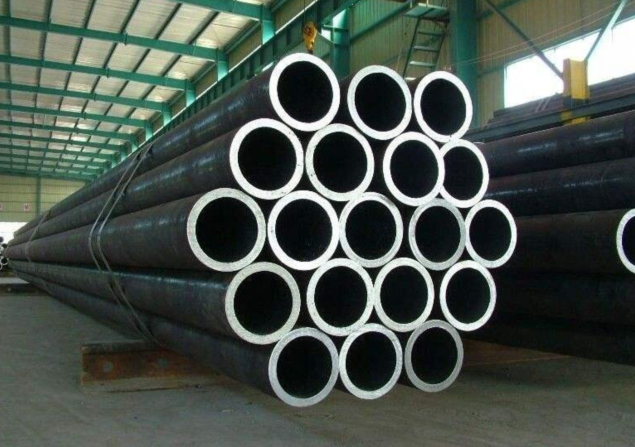
Chemical Composition of Carbon Steel Pipes
Medium carbon steel refers to carbon steel with a carbon content of 0.25% to 0.60%. There are a variety of products such as killed steel, semi-killed steel, boiling steel. In addition to carbon, it may contain a small amount of manganese (0.70% to 1.20%). In addition to being used as a building material, it is also used in large quantities to manufacture various mechanical parts. High carbon steel is often called tool steel and contains carbon from 0.60% to 1.70%. Such as drill bits, wire taps, reamers, etc. are made of steel with a carbon content of 0.90% to 1.00%.

Introduction of the functions and elements of various components of steel:
2. Chromium (Cr): In structural steels and chromium, chromium can significantly improve strength, hardness and wear resistance, but at the same time reduce plasticity and toughness. Chromium can improve the oxidation resistance and corrosion resistance of steel, and is therefore an important alloying element for stainless steel and heat-resistant steel.
3. (Ni): Nickel can increase the strength of steel while maintaining good ductility and toughness. Nickel has high corrosion resistance to acids and bases, and has rust and heat resistance at high temperatures. However, since nickel is a scarce resource, other alloying elements should be used instead of nickel-chromium steel.
4. Molybdenum (Mo): Molybdenum can refine the grain of steel, improve hardenability and heat strength, and maintain sufficient strength and creep resistance at high temperature (long-term stress at high temperature, deformation occurs, weigh Creep). The addition of molybdenum to the structural steel improves mechanical properties. It is also possible to suppress the brittleness of the alloy steel due to fire. Redness can be improved in tool steel.
5. Titanium (Ti): Titanium is a strong deoxidizer in steel. It can make the internal structure of steel dense, refine grain force; reduce aging sensitivity and cold brittleness. Improve welding performance. The addition of appropriate titanium to the chromium 18 nickel 9 austenitic stainless steel avoids intergranular corrosion.
6. Vanadium (V): Vanadium is an excellent deoxidizer for steel. Adding 0.5% vanadium to the steel refines the grain of the structure and improves strength and toughness. Carbides formed from vanadium and carbon improve hydrogen corrosion resistance at high temperatures and pressures.
7. Tungsten (W): Tungsten has a high melting point and a large specific gravity. It is an alloying element of precious earth. Tungsten and carbon form tungsten carbide with high hardness and wear resistance. Adding tungsten to tool steel can significantly improve red hardness and heat strength for cutting tools and forging dies.
8. Niobium (Nb): niobium can refine grains and reduce the superheat sensitivity and temper brittleness of steel, and increase strength, but the plasticity and toughness are reduced. The addition of bismuth in ordinary low-alloy steel can improve the resistance to atmospheric corrosion and hydrogen, nitrogen and ammonia corrosion at high temperatures.Nb can improve the welding performance. Twisting in austenitic stainless steel prevents intergranular corrosion.
9. (Co): Cobalt is rare and valuable, used in special steels and alloys, such as heat-strength steel and magnetic materials.
10. (Cu): Copper can improve strength and toughness, especially atmospheric corrosion. The disadvantage is that it is prone to hot brittleness during hot working, and the copper content is significantly reduced by more than 0.5%. When the copper content is less than 0.50%, there is no influence on the weldability.
11. (Al): Aluminum is a commonly used deoxidizer in steel. A small amount of aluminum is added to the steel to refine the grains and improve the impact toughness, such as 08Al steel for deep-drawing thin sheets. Aluminum also has oxidation resistance and corrosion resistance. Aluminum is combined with chromium and silicon to significantly improve the high temperature and corrosion resistance of steel. The disadvantage of aluminum is that it affects the hot workability, weldability and machinability of steel.
12. Boron (B): Adding a trace amount of boron to the steel can improve the compactness and hot rolling properties of the steel and increase the strength.
13. Nitrogen (N): Nitrogen can increase the strength of steel, low temperature toughness and weldability, and increase aging sensitivity.
Read more: What is Carbon Steel Pipe?


